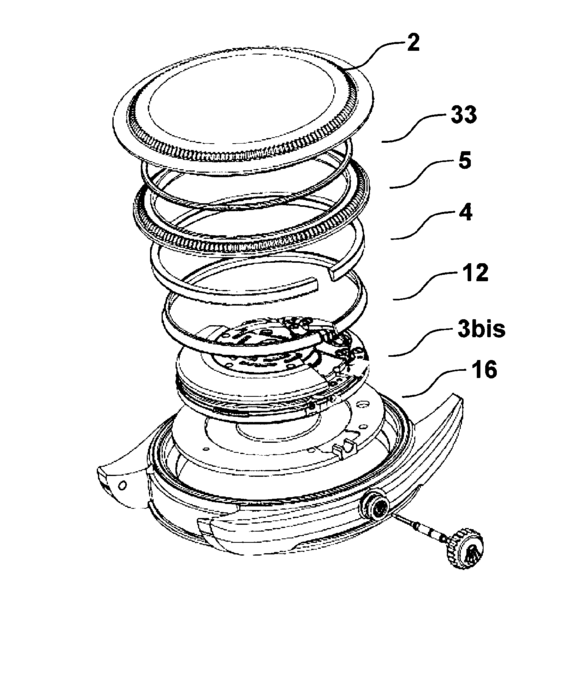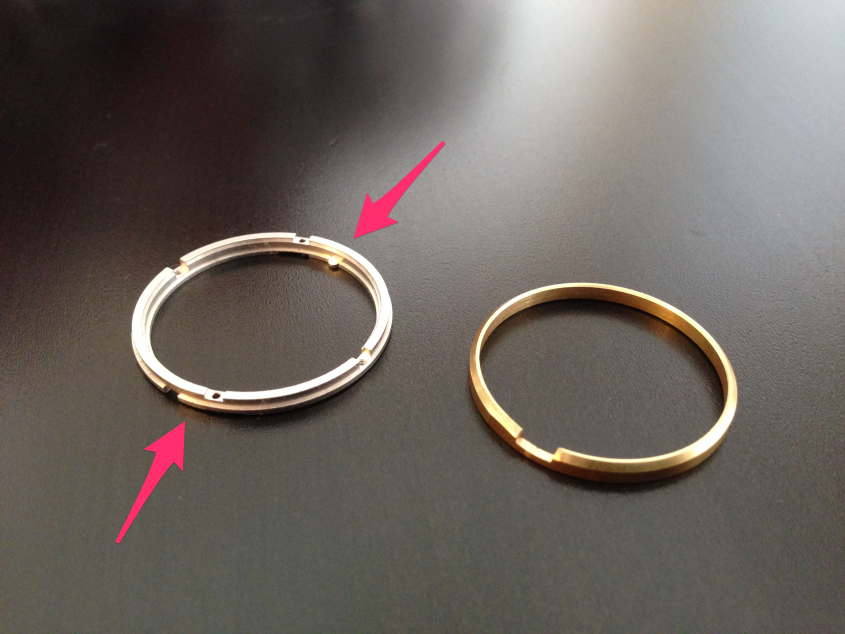
On the left is a Tudor movement ring for an ETA movement. On the right is a generic homemade ring for an ETA diameter movement. Note how the Tudor ring has flanges and complex details to locate and secure the movement and also cut recesses to allow the movement braces to bridge movement to case.
The result of this invention is to reduce the shock transferred to the movement and to eliminate the various mounting parts (screws, braces, etc) which could break in a shock from a drop to a hard surface.
What’s ingenious about this invention is the simplicity of implementation versus more traditional methods. With a traditional casing, you’d likely see two screws, two braces and a movement ring to fill the gap between movement and case.
In Rolex’s invention there are two split rings with a triangular cross section. When the two rings are placed point to point of their triangular cross sections and they begin to overlap, they center the movement and completely fill the gap between movement and case. When pressure is applied on the ring closest to the case back, it puts pressure on the outer diameter of the movement to center it in the case, and also puts pressure on the movement to push the movement up against the dial and crystal. To apply this pressure, an inner threaded ring similar to the inner case back on a Milgauss is used to clamp the rings and movement in place. Because patents are written to cover as broad a set of claims as possible, Rolex also includes an example where the two movement rings are compressed against each other by the normal single case back alone.
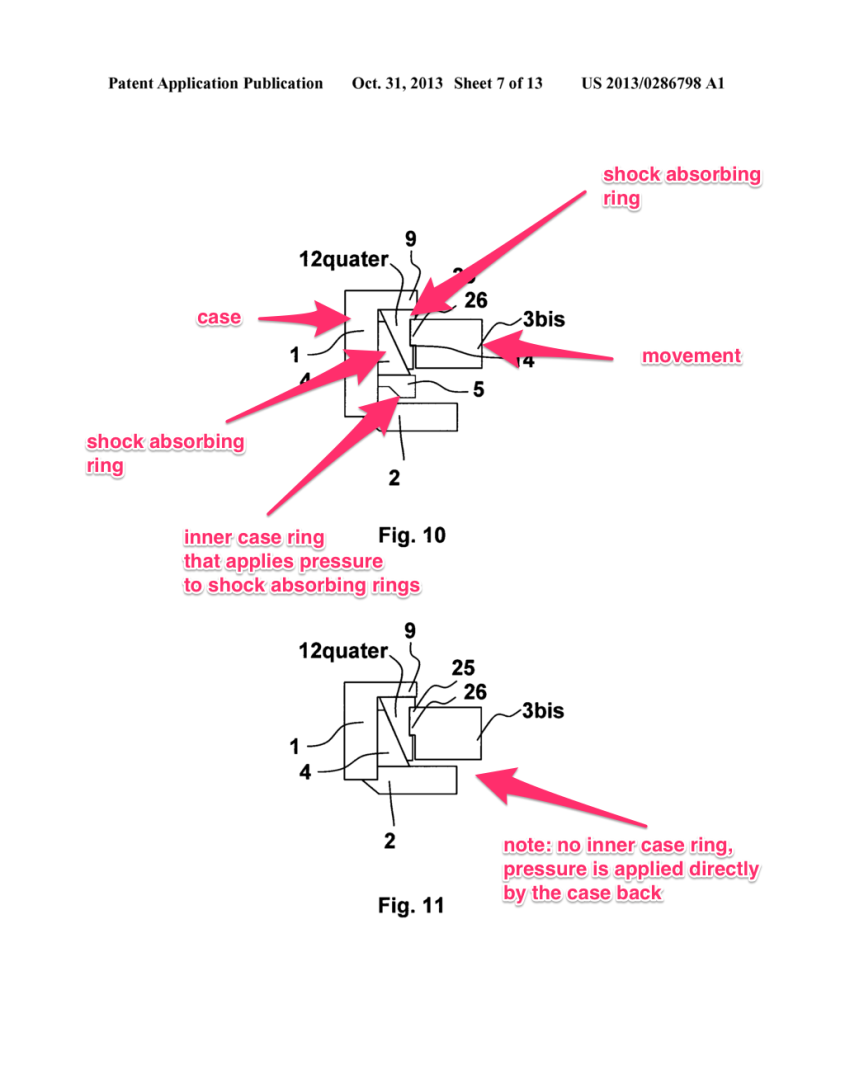
Rolex has patented the method of casing a movement using both an inner case pressure ring and using the case back to hold the movement in place.
Implementing this change does mean production changes for Rolex beyond using the inner case and flange screws. Rolex needs a gap between case and movement for these two movement rings to occupy. In larger cases like Milgauss this shouldn’t be any trouble. In smaller cases like the 36mm Datejust, this may represent a problem. There does not appear to be any room between the case and movement to fill. Rolex will either have to use this invention on larger case watches or create a movement smaller in diameter.
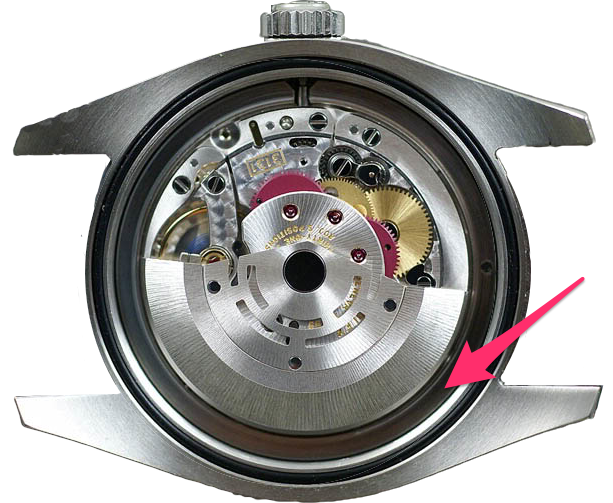
The Rolex 40mm case has enough space between the 3135 calibre and case to accommodate the case-up mounting the invention describes.
Interestingly, the diagrams seem to show that the dial no longer has dial feet, but instead has a c-shaped carriage at the edge of the dial which the stem passes through to align the dial to the movement. This change won’t just affect shock-resistance positively, it also makes mass production assembly easier. The result is that casing a movement will be easier when the watch is being assembled at the factory.
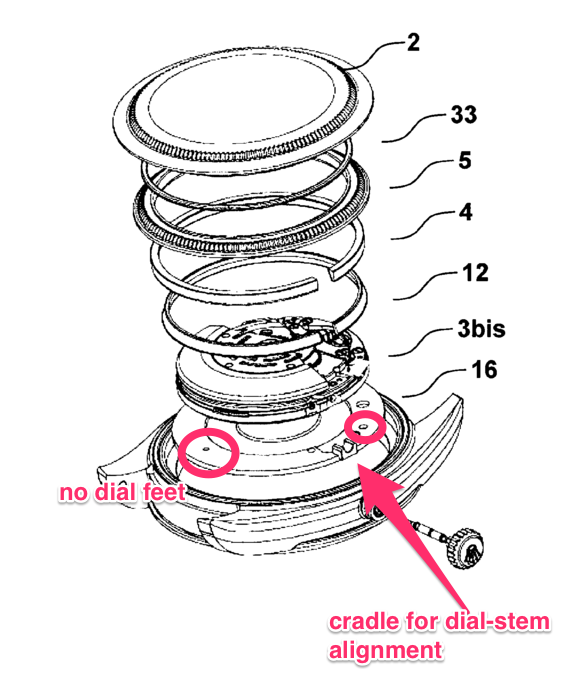
The drawing shows a cradle for the stem alignment and no dial feet. This is not specifically mentioned in any of Rolex’s patent claims.
Instead of having to clamp dial feet in the movement, the watchmaker inserts the dial and movement, first ring, second ring, inserts the stem, screws down the ring to apply pressure and center the movement, and applies the case back. It seems much faster and more reliable as a mass production means of assembly. While Rolex does have a number of patents and inventions that it owns and doesn’t currently actively use in its products, the fact that they applied for the patent in the United States and that it would require no modification to most of their existing cases means that it is very possible we will see this feature in upcoming Rolex watches.
Rolex would likely give this new technology a special marketing name and probably highlight it in a new product. From an advertising perspective Rolex can also feature an upgraded shock-protection system with its ambassadors who play sports that can expose the timepieces to high amounts of shock and force. These can include golf, tennis, skiing, or yachting. aBlogtoWatch will pay close attention to Rolex in the near future to see if and how they use this technology. rolex.com

